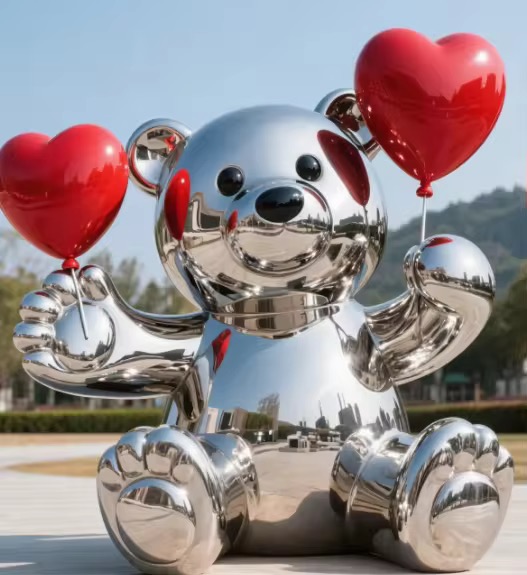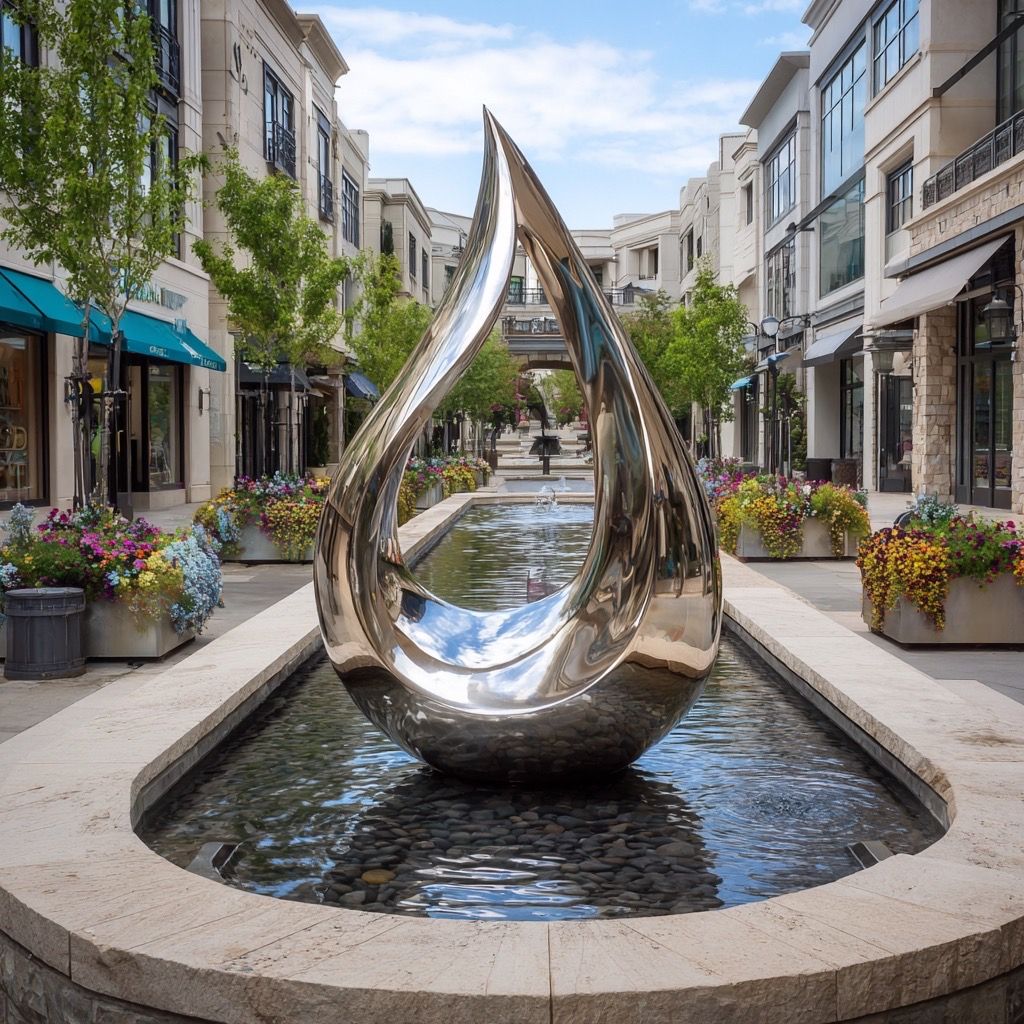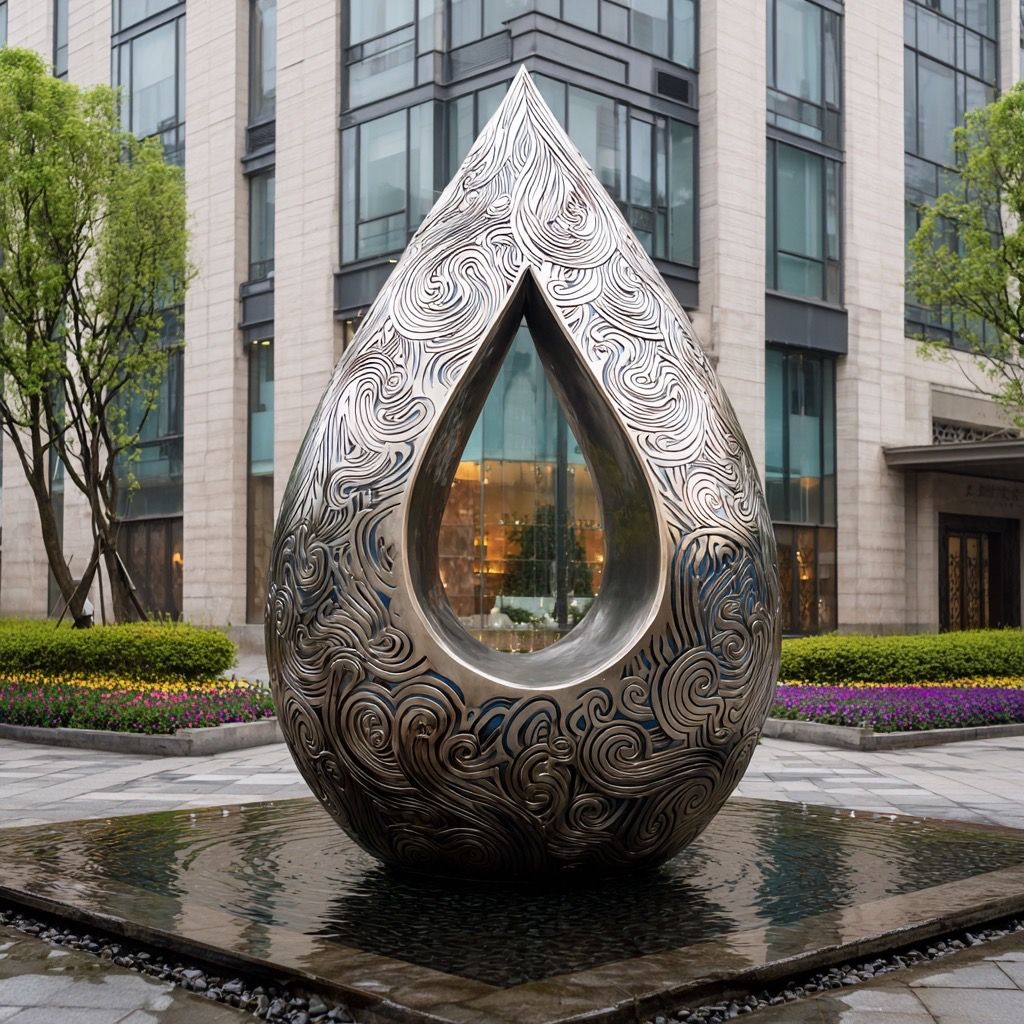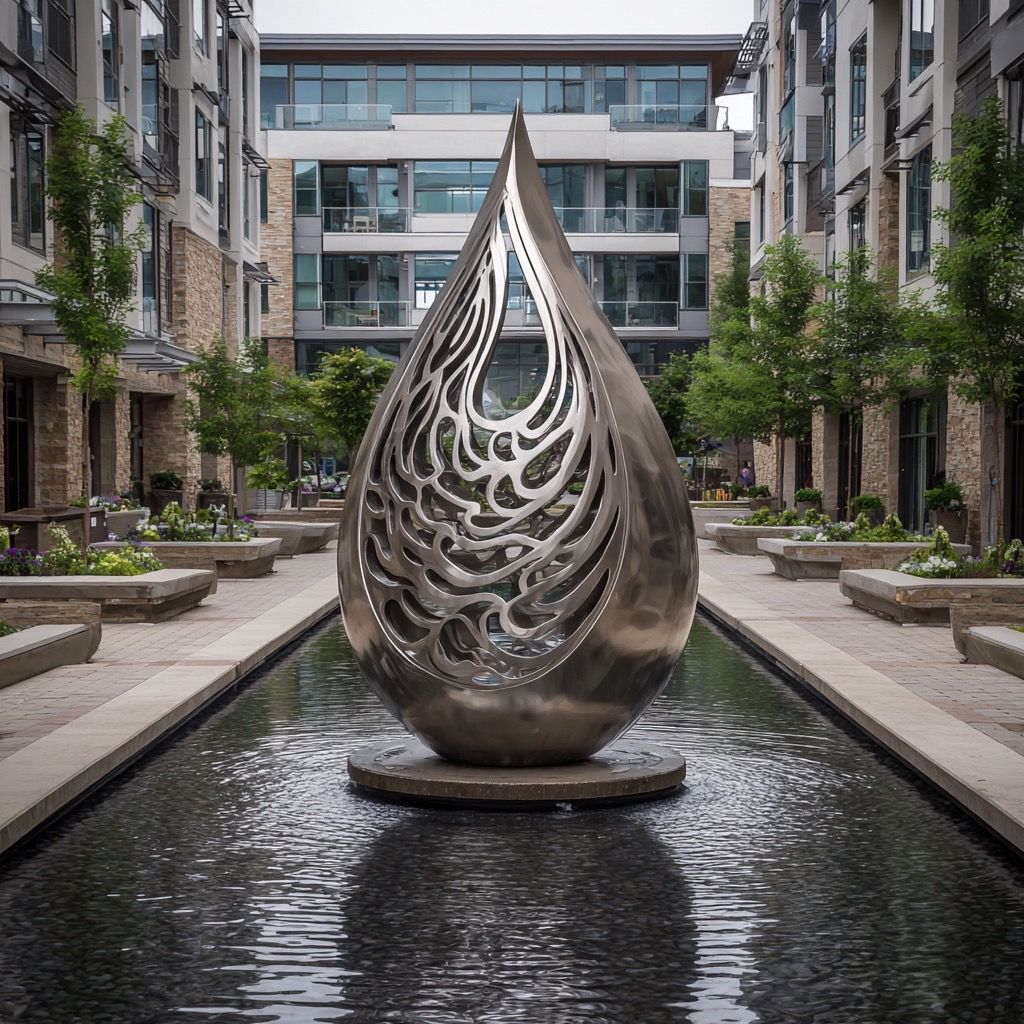Stainless steel sculptures are widely appreciated for their modern aesthetics, durability, and corrosion resistance. Among various stainless steel grades, 304 and 316 stainless steel are the two most commonly used materials in sculpture manufacturing. But what exactly sets them apart? In this article, we will explore the key differences between 304 and 316 stainless steel sculptures to help you make an informed decision for your projects.

1.Material Composition
- 304 Stainless Steel: Contains 18% chromium and 8% nickel. It is known as the standard “18/8” stainless steel.
- 316 Stainless Steel: Contains 16% chromium, 10% nickel, and an additional 2% molybdenum, which greatly enhances its corrosion resistance, especially in chloride-rich environments.

2.Corrosion Resistance
- 304 Stainless Steel Sculptures: Excellent resistance to corrosion and oxidation in normal outdoor environments. Suitable for urban landscapes, parks, and indoor decorations.
- 316 Stainless Steel Sculptures: Offers superior resistance to saltwater, chlorides, and harsh weather. Ideal for coastal areas, marine environments, fountains, and outdoor installations exposed to chemicals.

3.Durability and Longevity
Both 304 and 316 stainless steel sculptures are highly durable. However:
- 304 sculptures perform excellently in mild environments but may show signs of corrosion over time in coastal regions.
- 316 sculptures maintain their pristine appearance even in aggressive, corrosive environments, ensuring a longer lifespan.

4.Price Difference
- 304 Stainless Steel is more affordable and widely used for general-purpose sculptures.
- 316 Stainless Steel is more expensive due to its enhanced chemical composition, but it is worth the investment for installations in harsh climates or where superior corrosion resistance is essential.

5.Applications in Sculpture Art
- 304 Sculptures: Suitable for urban public art, indoor sculptures, commercial plaza installations, and garden decorations.
- 316 Sculptures: Perfect for seaside parks, yacht clubs, fountains, outdoor monuments, and industrial areas where chemical exposure is frequent.
Conclusion
Choosing between 304 stainless steel sculptures and 316 stainless steel sculptures depends largely on the installation environment and budget. If you are looking for a cost-effective solution for indoor or urban outdoor settings, 304 stainless steel is an excellent choice. However, for marine environments or places with high humidity and chemical exposure, 316 stainless steel sculptures offer unmatched durability and resistance.
At Quyang Sculptures, we specialize in custom-made stainless steel sculptures crafted from both 304 and 316 grades to meet your specific needs. Contact us today to discuss your project!
